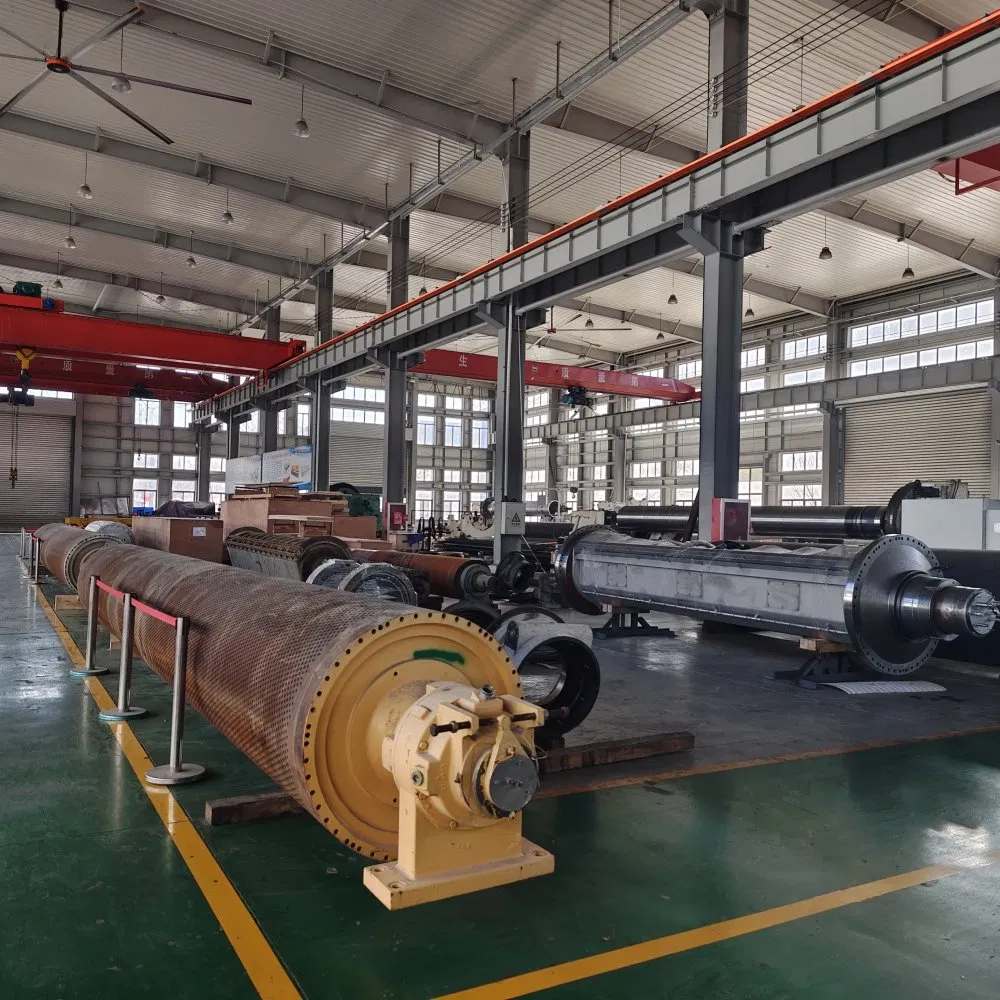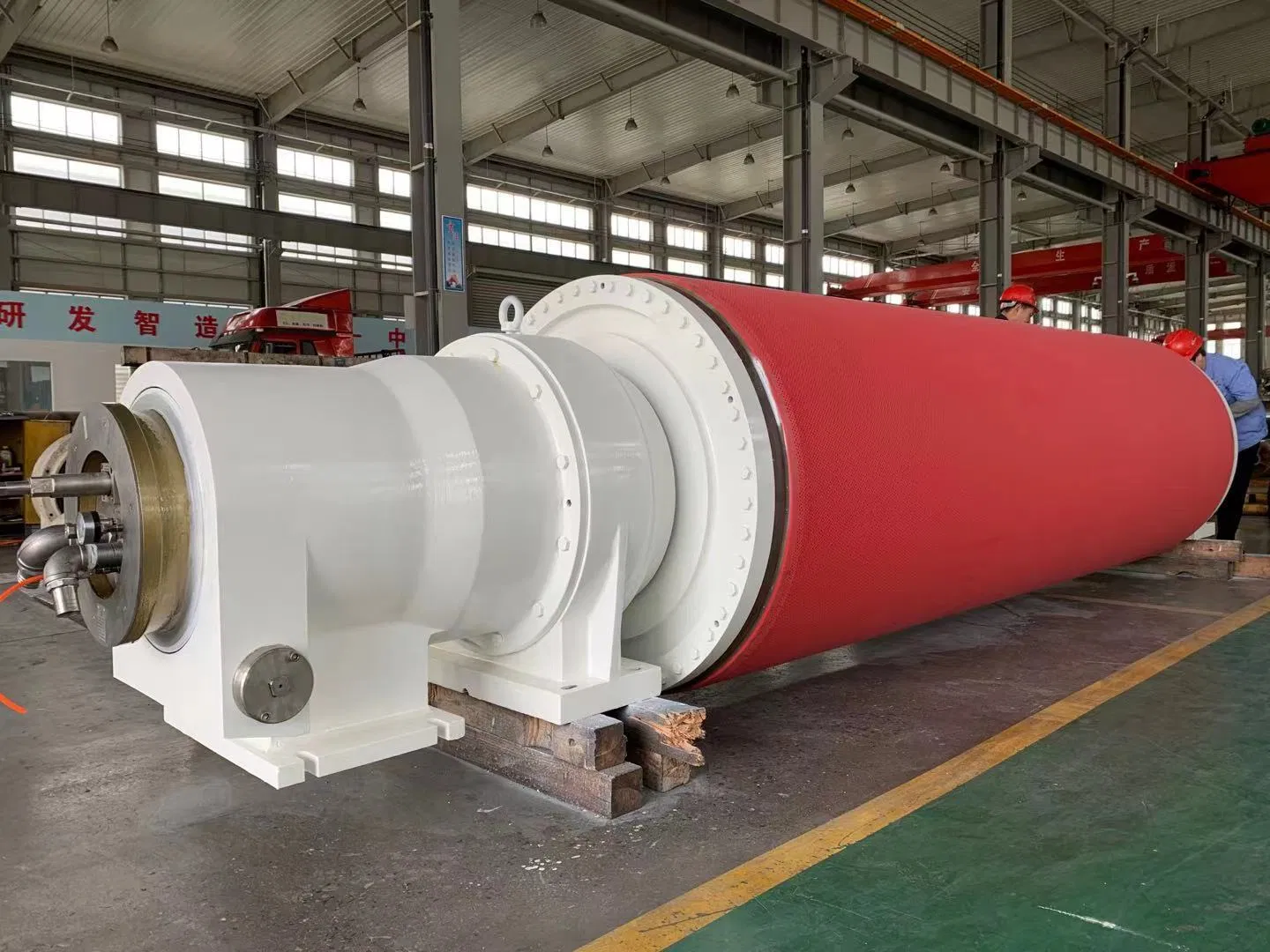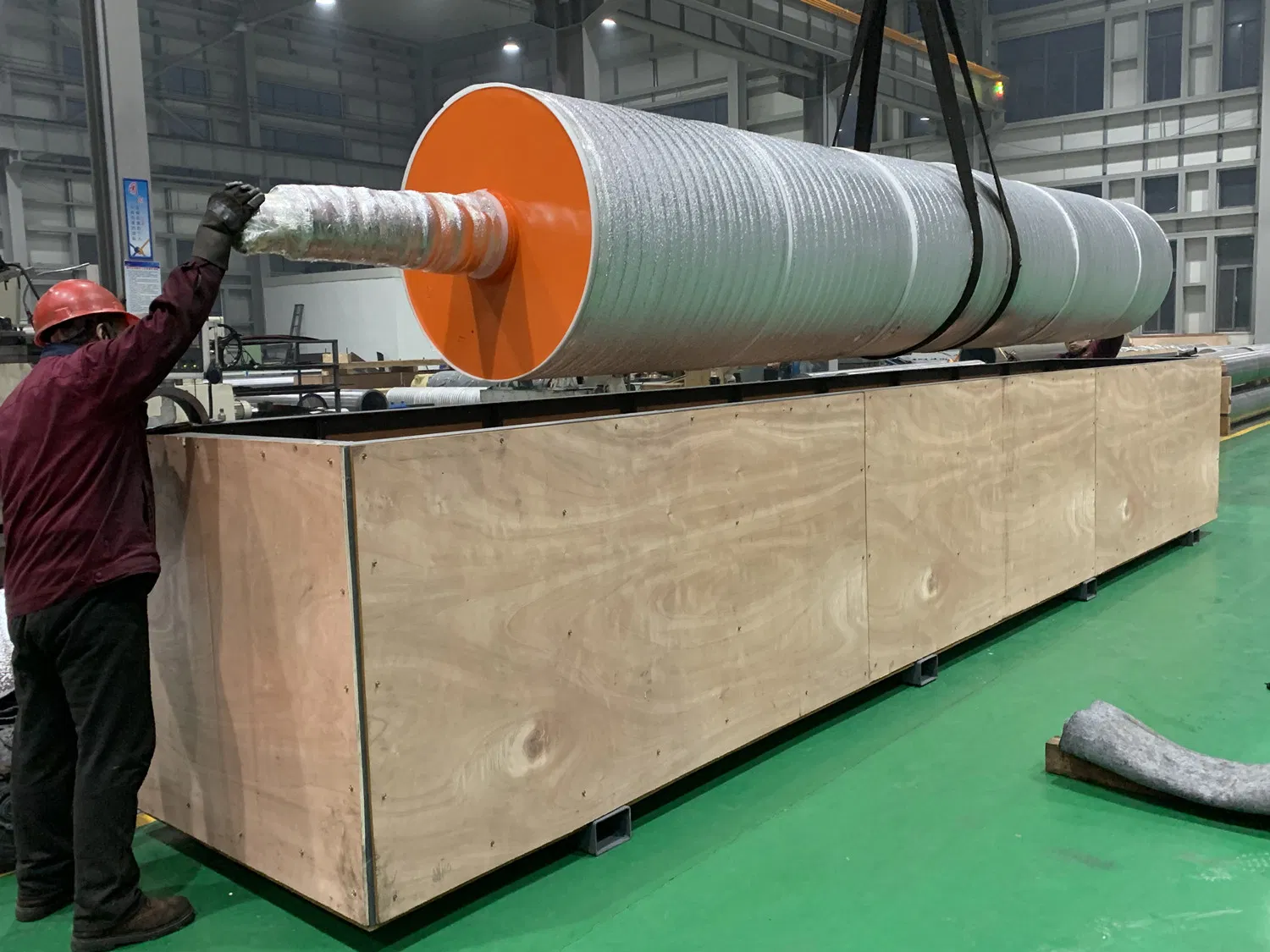In the intricate world of paper manufacturing, every component plays a pivotal role in ensuring smooth, efficient, and high-quality production. Among these, the paper machine rolls stand out as critical workhorses, constantly under immense pressure, heat, and chemical exposure. Yet, often overlooked is the profound impact of their material composition and wear resistance on the entire operational chain. We're talking about the unsung heroes: high wear-resistance paper machine stone rolls. These aren't just any rolls; they are engineered marvels designed to withstand the harshest conditions, directly influencing everything from production speed and paper quality to maintenance costs and environmental footprint.
To be honest, for decades, the industry grappled with the inherent limitations of traditional roll materials. The constant battle against abrasion, corrosion, and thermal stress led to frequent shutdowns, costly repairs, and inconsistent product quality. But times have changed. Thanks to advancements in material science and manufacturing techniques, we now have solutions that promise unprecedented durability and performance. This article will delve deep into why investing in high wear-resistance paper machine stone rolls isn't just an option, but a strategic imperative for any modern paper mill aiming for peak efficiency and long-term sustainability.
The Heartbeat of Paper Production: Understanding Paper Machine Rolls
Paper machines are colossal, complex systems, often stretching hundreds of meters, where a slurry of wood fibers and water is transformed into the paper products we use daily. At the core of this transformation are various types of rolls: press rolls, dryer rolls, guide rolls, and more. Each performs a specific function, from dewatering the pulp to pressing and drying the nascent paper web. The sheer scale and continuous operation mean these rolls are subjected to extreme conditions.
Imagine, if you will, a roll constantly spinning, pressing, and drying a continuous sheet of paper, often at speeds exceeding 1,500 meters per minute. The environment is hot, humid, and often corrosive due to the chemicals used in the papermaking process. This relentless stress leads to wear, erosion, and fatigue. Traditional materials, while functional, simply couldn't keep up with the demands for higher speeds, broader widths, and more aggressive chemical environments. This is where the concept of enhanced durability, specifically high wear-resistance paper machine stone rolls, becomes not just desirable, but absolutely essential.
Challenges Faced by Traditional Rolls
- Abrasion: The constant friction from the paper web and residual fibers acts like sandpaper, slowly grinding down the roll surface.
- Corrosion: Chemicals like acids, alkalis, and bleaching agents attack the roll material, weakening its structure and leading to pitting.
- Thermal Stress: Rapid temperature changes and high operating temperatures can cause thermal expansion and contraction, leading to cracks and deformation.
- Fatigue: Continuous mechanical stress and vibration can lead to material fatigue, ultimately resulting in structural failure.
- Deposits: Accumulation of stickies, pitch, and other contaminants can affect roll performance and paper quality.
Frankly speaking, these challenges directly translate into operational inefficiencies. When a roll fails or wears excessively, the entire production line grinds to a halt. And in the paper industry, downtime is synonymous with lost revenue, missed deadlines, and a significant blow to profitability.
The Cost of Compromise: Why Wear and Tear is a Major Industry Headache
The implications of inadequate roll durability extend far beyond the immediate need for replacement. When rolls wear prematurely, the ripple effect throughout a paper mill can be devastating. Have you ever wondered about the true cost of a seemingly minor component failure in a large industrial setting? It's often astronomical.
Firstly, there's the obvious: unscheduled downtime. Every minute a paper machine is not running, it's losing money. This isn't just the cost of lost production; it includes the labor costs for maintenance crews, the energy consumed during startup and shutdown cycles, and the potential for off-spec product during the restart phase. Many experts agree that reducing downtime in paper production is one of the most critical factors for improving overall profitability. A single unscheduled stop can cost a mill tens of thousands, if not hundreds of thousands, of dollars.
Beyond downtime, there are other significant costs. Worn rolls can lead to inconsistent pressing, uneven drying, and ultimately, a decline in paper quality. This can manifest as poor sheet formation, increased breaks, or variations in caliper and moisture content, leading to customer complaints and rejected batches. In my experience, even subtle imperfections caused by worn rolls can significantly impact the marketability of the final product.
Hidden Costs of Premature Roll Wear
- Increased Maintenance Labor: More frequent roll changes and repairs mean higher labor expenditure.
- Higher Spare Parts Inventory: Mills need to keep more spare rolls on hand, tying up capital.
- Energy Inefficiency: Worn rolls can lead to less efficient dewatering, requiring more energy in the dryer section.
- Environmental Impact: Increased waste from rejected paper and higher energy consumption contribute to a larger carbon footprint.
- Safety Risks: Failed rolls can pose significant safety hazards to personnel.
It's worth noting that the traditional approach of simply replacing worn rolls with similar materials often perpetuates this cycle of high maintenance and low efficiency. The industry needed a paradigm shift, a solution that could fundamentally alter the lifespan and performance of these critical components. This is precisely where the innovation in high wear-resistance paper machine stone rolls steps in.
Engineering Excellence: Crafting High Wear-Resistance Paper Machine Stone Rolls
The development of high wear-resistance paper machine stone rolls is a testament to advanced material science and precision engineering. These aren't just "stone" rolls in the traditional sense; they often incorporate sophisticated composite materials, ceramics, and specialized coatings designed to impart superior durability. The goal is to create surfaces that can withstand the relentless assault of abrasion, corrosion, and thermal stress for extended periods, far outperforming conventional materials.
Interestingly enough, the key lies in selecting and combining materials with properties specifically tailored for the papermaking environment. For instance, while granite and natural stone were historically used, their limitations in terms of porosity, hardness, and chemical resistance became apparent as machine speeds increased. Modern solutions leverage the best of what material science has to offer.
Materials and Technologies Behind Superior Rolls
- Advanced Ceramic Composites: These are often at the forefront. Materials like silicon carbide, alumina, and zirconia offer exceptional hardness, chemical inertness, and thermal stability. They can be incorporated as a surface layer or as part of a matrix. Advanced ceramic composite rolls provide a significant leap in wear resistance.
- Polymer Composites: Engineered polymers, sometimes reinforced with fibers (like carbon or glass), can offer excellent corrosion resistance and lighter weight, reducing bearing loads.
- Specialized Coatings: Thermal spray techniques (e.g., plasma spray, HVOF) are used to apply dense, hard, and wear-resistant layers of ceramics, cermets (ceramic-metal composites), or specialized alloys onto a roll's core. These coatings bond strongly to the substrate, providing a protective shield.
- Proprietary Blends: Many manufacturers develop their own unique blends and formulations, often combining the benefits of different materials to achieve optimal performance characteristics for specific applications within the paper machine.
The manufacturing process itself is highly specialized, involving precision grinding, polishing, and quality control to ensure perfect concentricity, balance, and surface finish. A microscopic flaw on a roll surface can lead to significant paper quality issues or even premature failure. This meticulous attention to detail is what sets truly high wear-resistance rolls apart.

Beyond Durability: The Multifaceted Benefits of Superior Rolls
While "wear resistance" is the headline feature, the advantages of deploying high wear-resistance paper machine stone rolls extend far beyond merely lasting longer. These advanced rolls contribute to a holistic improvement in paper mill operations, impacting efficiency, product quality, and even environmental sustainability.
Firstly, the most direct benefit is the significantly extended lifespan. This means fewer roll changes, which directly translates to less unscheduled downtime and reduced maintenance labor. When you're not constantly stopping production to swap out rolls, your operational continuity improves dramatically. This is a primary factor in optimizing paper machine roll lifespan and, by extension, the entire machine's uptime.
Secondly, superior surface integrity leads to superior paper quality. A roll that maintains its precise dimensions and surface finish over a longer period ensures consistent pressing, uniform moisture removal, and reduced sheet breaks. This results in a higher quality final product with fewer defects, which is crucial for meeting stringent customer specifications and maintaining market competitiveness. I've found that mills investing in these rolls often report a noticeable improvement in their paper's physical properties.
Tangible Benefits of High Wear-Resistance Rolls
- Reduced Operating Costs: Lower maintenance, less downtime, and fewer spare parts translate directly into significant cost savings.
- Increased Production Efficiency: Consistent operation at optimal speeds without interruptions boosts overall output.
- Improved Paper Quality: Uniform pressure and surface conditions lead to better sheet formation, strength, and appearance.
- Energy Savings: More efficient dewatering in the press section can reduce the energy required in the dryer section, lowering utility bills.
- Enhanced Safety: Fewer manual interventions for roll changes and repairs reduce the risk of workplace accidents.
- Environmental Advantages: Less waste from rejected paper and lower energy consumption contribute to a more sustainable operation.
Frankly speaking, the return on investment for these advanced rolls is often rapid and substantial. While the initial capital outlay might be higher than for conventional rolls, the long-term savings and operational improvements quickly justify the expenditure. It’s an investment in the future resilience and profitability of the mill.

Selection, Installation, and Maintenance: Maximizing Your Investment
Acquiring high wear-resistance paper machine stone rolls is just the first step. To truly maximize their potential and ensure they deliver on their promise of extended durability and performance, proper selection, meticulous installation, and diligent maintenance are absolutely crucial. Neglecting any of these phases can undermine even the most advanced roll technology.
Selecting the Right Roll for the Job
Not all high wear-resistance rolls are created equal, nor are all paper machine positions identical in their demands. The selection process should be a collaborative effort between the mill's engineering team and the roll manufacturer. Factors to consider include:
- Machine Position: Press, dryer, couch, guide rolls each have unique requirements for surface properties, load capacity, and temperature resistance.
- Paper Grade: Different paper grades (e.g., newsprint, fine paper, board) involve varying levels of abrasion and chemical exposure.
- Operating Conditions: Speed, temperature, pressure, and chemical environment (pH levels, presence of stickies) all influence material selection.
- Budget vs. Longevity: While high wear-resistance rolls offer long-term savings, balancing initial cost with expected lifespan is key.
Meticulous Installation
Even the most perfectly manufactured roll can fail prematurely if not installed correctly. Precision is paramount. This involves:
- Proper Alignment: Misalignment can lead to uneven wear, excessive vibration, and bearing damage.
- Correct Bearing Installation: Bearings must be installed and lubricated according to manufacturer specifications to ensure smooth rotation and prevent premature failure.
- Balancing: Dynamic balancing is essential, especially for high-speed applications, to prevent vibration that can damage the roll and affect paper quality.
Diligent Maintenance and Monitoring
Even with superior materials, routine maintenance is non-negotiable. This includes:
- Regular Inspections: Visually inspect roll surfaces for signs of wear, pitting, or damage. Use non-destructive testing methods where appropriate.
- Cleaning: Prevent the buildup of deposits (stickies, pitch) that can affect roll performance and paper quality.
- Grinding and Crowning: Periodically, rolls may need regrinding to restore their precise profile and surface finish. This is crucial for maintaining uniform nip pressure.
- Vibration Analysis: Monitoring vibration levels can provide early warnings of bearing issues or roll imbalance.
- Lubrication: Ensure all associated bearings are properly lubricated with the correct type and amount of lubricant.

In my experience, mills that implement a robust predictive maintenance program for their rolls, combining regular inspections with advanced monitoring techniques, consistently achieve the longest lifespans and best performance from their high wear-resistance investments. It’s about proactive care rather than reactive repair.
The Future is Resilient: Innovations and the Path Forward
The journey towards more resilient and efficient paper production is ongoing, and high wear-resistance paper machine stone rolls will undoubtedly play an even more central role in the future. As the industry continues to push for higher speeds, broader machines, and more sustainable practices, the demands on these critical components will only intensify.
Looking ahead, we can expect further innovations in material science. Researchers are constantly exploring new composite structures, advanced ceramic formulations, and novel surface treatments that promise even greater durability, reduced friction, and enhanced energy efficiency. The integration of smart technologies, such as embedded sensors for real-time monitoring of temperature, vibration, and wear, will also become more commonplace, enabling truly predictive maintenance and optimizing roll performance on the fly.
The focus will also increasingly be on the entire lifecycle of the roll, from sustainable manufacturing processes to end-of-life recycling. Manufacturers are exploring ways to reduce the environmental footprint of roll production and to make worn rolls more easily recyclable or refurbishable, aligning with the broader industry trend towards circular economy principles.
Ultimately, the investment in high wear-resistance paper machine stone rolls is an investment in the long-term viability and competitiveness of a paper mill. It's about building resilience into the very heart of the production process, ensuring that paper machines can operate at peak performance, consistently deliver high-quality products, and do so with greater efficiency and a reduced environmental impact. The future of paper production is resilient, and these advanced rolls are paving the way.
For more detailed information, please visit our official website:Paper machine stone rolls
About the author: Dr. Elias Thorne is a materials science expert with over two decades of experience specializing in industrial wear solutions for heavy machinery. His work focuses on advanced composites and surface engineering, particularly for the pulp and paper industry. Dr. Thorne frequently consults with leading paper mills worldwide, helping them optimize operational efficiency and extend equipment lifespan through innovative material applications.


